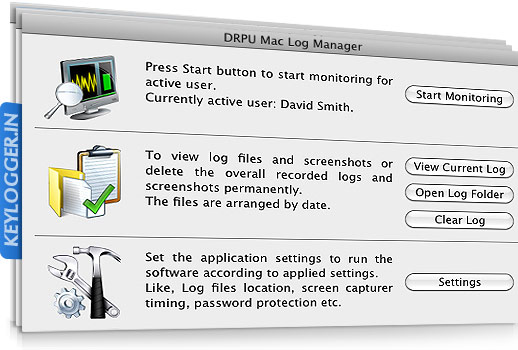
To replay the slides of the session from the point at which the alert occurred, click the Video icon (shown above).
Mac os keylogger how to#
When the user types the command, the text is captured by the ObserveIT keylogger.Īn alert rule can be configured for this action to generate an alert and display a Blocking Message to the end user, as shown in the following screenshot:įor details on how to configure the keywords that will generate the alert, see Used Keyboard (Keylogging) Did What

This is a risky command that should be avoided as it could enable the user to perform activities with 'superuser' permissions.
Mac os keylogger mac#
In this example, a user opens a Mac Terminal and types the command sudo -i. The following example shows how captured key logging data can be used to generate an alert on a Mac operating system. , | ( ) / \ ( ) ` Mac Key Logging Example Special characters include: * % ? & ! ^ + – = # $ ~. Note that in the case of words with special characters, you must specify the entire word when searching. You can search for and define alerts on data and screenshots in which the typed text was a single special character (for example, "%") or a word that contains a special character for example, "*revenues". Searching keylogger data is case-insensitive. Key combinations are Cmd, Control, Option, and Shift with other keys. Special keys include Backspace, Insert, Enter, PrtScr, Clear, Return, Delete, End, Esc, and F1 to F12. Manually typed and auto-completed (by using Tab, CTRL-T, UP/DOWN arrows) commands are captured as keylogger data output written to the screen is not captured. The command line text is captured without the prompt.

When using the ObserveIT keylogger on a Mac-based operating system, note the following:įor the Terminal (Mac) application, you can define alerts and search for keywords in the command line. For details, see Enabling Key Logging.Ĭurrently supported versions for deploying ObserveIT Agents on Mac-based systems are: To use the ObserveIT keylogger on monitored Mac-based machines, the key logging feature must first be enabled in the Server Policies settings of the ObserveIT Web Console.

ObserveIT also enables you to generate alerts based on keylogger data which is captured on Mac-based desktops, laptops, or servers, as keyword-searchable logs.


 0 kommentar(er)
0 kommentar(er)
